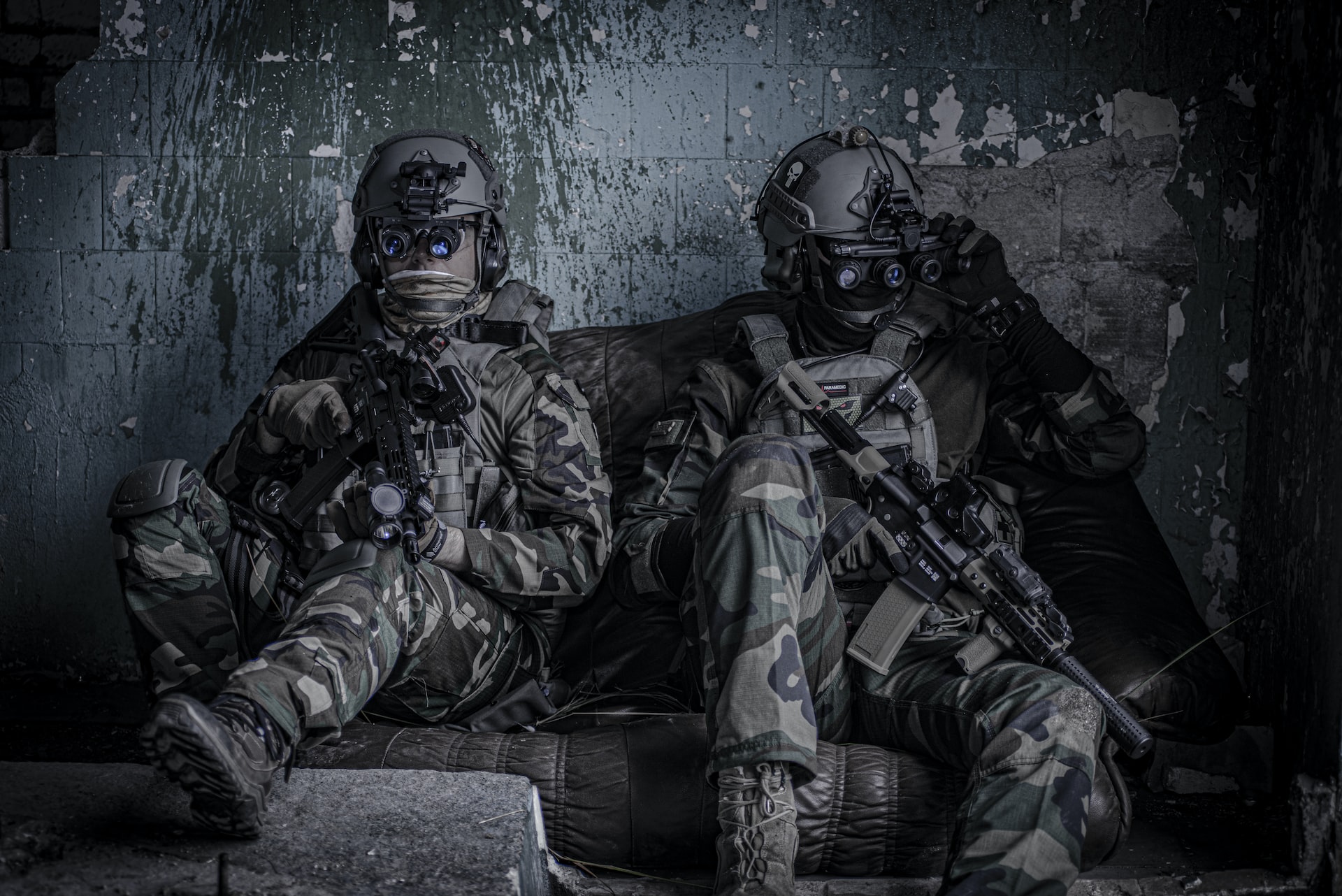Rating of the best polypropylene bags for 2025

To date, polypropylene bags have become so commonplace in everyday life that people have almost ceased to notice the very fact of their use. They can be put into action in almost any life situation: when you need to store any items, pack a grocery basket, unload construction debris, or simply pack things for transportation. Such containers are used by people everywhere - from the industrial sphere to private life. The versatility of the use of plastic bags could not but be reflected in the variety of created options for this item.This consumable can vary in color, be made in the standard version or with additional options that will ensure the tightness of the contents, it can also be equipped with special valves and without them, have handles, ties, laces, etc. Naturally, such a variety is only for the benefit of the consumer, however, he automatically faces the problem of a competent choice, which can be solved only based on a detailed knowledge of the entire topic.

Content [Hide]
- 1 The uniqueness of polypropylene packaging
- 2 Scopes of polypropylene burlap
- 3 Weight and capacity as the main characteristics
- 4 Features of production and design
- 5 Types of bags according to the method of use
- 6 Advantages of polypropylene
- 7 The combination of liner and lamination is the best option
- 8 Storage Tips for Specific Foods
- 9 Tips for Using Dimensions and Capacity
- 10 Rating of the best polypropylene bags for 2025
- 11 Instead of an epilogue
The uniqueness of polypropylene packaging
It can be divided into classes depending on the quality of the raw materials used, which can be recognized by color. For example:
- White - for its manufacture, only high-quality raw materials are used, which are environmentally friendly and have passed additional production testing. Such containers are suitable for transportation and storage of bulk food items.
- Gray - made from recycled materials and designed for storage / transportation of various chemicals, building materials or fertilizers.
- Green - in these bags they store and dispose of garbage left after construction work. They are also made from recycled materials, so they have a fairly budget price, and their reliability is sacrificed.
Burlap has its own capacity. On the Russian market, there are options with volumes of 5, 10, 25, 70 kilograms. The value of the price will also depend on the possible volume.
Scopes of polypropylene burlap
According to market research, the demand for plastic bags rises and falls depending on the season. Usually in the summer the demand curve rises sharply, for harvest time comes and warm weather favors construction work. Therefore, in the warm season, grocery stores, construction companies, utilities, cleaning companies, i.e. most organizations involved in the construction or cleaning of various facilities, try to purchase such products in bulk.
Bag containers may differ in their characteristics, which significantly affects the scope of its application. For example, if the bag is intended for storing sugar, then it must be equipped with a special lamination and a special liner that will protect the contents from interacting with moisture. It must also have adequate strength and be resistant to decay processes.And the duration of storage of goods in it will be ensured by microperforation. The features of these characteristics will be discussed in more detail below.
And now, it is still worth considering separately each area of application of the object in question.
Agriculture
The extreme demand in the agro-industrial sector can be explained by special qualities, such as high strength, the absence of toxic and environmentally hazardous components in the composition, and stable resistance to putrefactive processes. Agricultural companies store grain, various cereals, seeds, vegetables, fruits, flour and sugar, and other food products in bags. The polypropylene woven base allows the stored goods to "breathe" due to the special weaving structure. As a rule, the agro-industrial complex uses containers of the following sizes (in centimeters):
- 45 x 30.
- 75 x 50.
- 105 x 55.
- 55 x 40.
- 96 x 56.
Building sector
Firms supplying building materials, as well as various companies directly involved in the construction or repair of buildings and structures, use polypropylene burlap for the transportation and storage of various bulk materials, for example:
- Expanded clay.
- Crushed stone of small fraction.
- Lime.
- Gypsum.
- Sand.
- Cement.
Due to the fact that the packaging passes air, the material can be stored for a long time. In addition, construction waste can be packed into waste containers. The coolies used in construction are distinguished by increased dimensions - these are 105 x 55 and 90 x 55 centimeters, respectively.
Sphere of trade
Warehousing, transportation and packaging of various types of goods in the modern world do not require extra time or financial costs, due to the use of polypropylene sacks.In retail and small wholesale, products with a capacity of 5 to 10 kilograms are used, and in wholesale trade, bags are used that can withstand a maximum load of 15 to 50 kilograms. Among other things, modern industry, especially for the trade sector, produces coolies of increased capacity (up to 70 kilograms) and which have non-standard sizes.
Chemical industry
Due to the material of its manufacture, polypropylene containers are perfect for storing chemically aggressive substances - various chemicals and minerals, chemical fertilizers, etc. The basis of the product is not afraid to interact with organic solvents, alkalis and acids. The contents will be stored securely, however, storage of such products in direct sunlight is unacceptable. To save especially caustic objects, a special polyethylene liner can be inserted into the sack.
Communal and economic activities
Cleaning companies prefer plastic bags because of their practicality and affordability. With their help, it is easy to pack and take out any garbage - from banal food waste and natural household garbage (rags, leaves, dirt) to broken glass, concrete residues, brick fragments that remain after the completion of repair and construction work. At the same time, polypropylene is able to withstand biological objects that have already undergone putrefaction, various polymers, and objects of non-standard sizes. Thus, p / p bags will become indispensable helpers when cleaning offices and adjoining street areas, when landscaping sites, etc.
Weight and capacity as the main characteristics
The Russian market has tried to develop a unified classification for polypropylene bags, of which there are four main ones:
- From 3 to 10 kilograms - often used at retail facilities, bases specializing in small wholesale or supermarkets. With such a capacity, it is convenient to pack and store almost any product, however, it is most used for storing sugar during the period of active sales. Such products are convenient to unload, transport, and even store manually.
- From 10 to 20 kilograms - great for small wholesale trade. You can easily transport food and goods in small batches.
- From 25 to 50 kilograms is the best option for bulk deliveries. It can be used both for bulk products in large volumes (up to vegetables), and for the transport of building materials, household goods and large debris (of any origin).
- From 60 to 100 kilograms - they are used extremely rarely, because when they are completely filled, their transportation is difficult due to the increased weight, which can only be done with the help of special loading equipment. Most often they are filled with substances that have a large volume, but low weight - feather, tea, cotton wool, etc.
Features of production and design
Despite the rather primitive structure of a polypropylene bag, it may also have its own features:
- Inner liner - designed to protect food products (spices, sugar, flour) from dirt and dust, as well as moisture, at the same time excludes the impregnation of products with foreign odors.
- External lamination - is responsible for the tightness of the entire product, does not allow foreign fractions to penetrate inside, does not allow stored products to erode.A very relevant additional option for the storage / transportation of sensitive goods - cocoa, coffee, tea.
- Top ties - do not allow goods to fall out through the upper neck.
- Portable handles - attached to small-capacity products, designed for easy manual transportation.
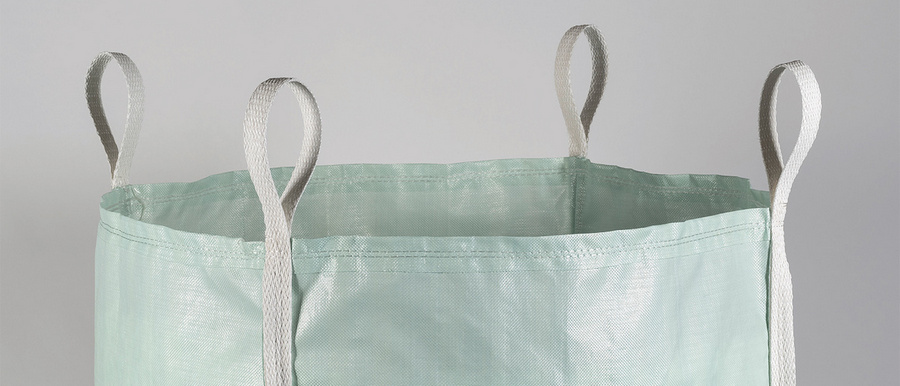
IMPORTANT! It is always worth remembering that only white bags are intended for food! All other colors are suitable for other objects.
Types of bags according to the method of use
- With a polyethylene liner - this type is considered the most secure, since the sewn-in liner will provide maximum sealing of the inner layer. It will protect not only from moisture, but also from other external factors, reliably protecting the contents. However, the cost of such sacks is quite high. Do not think that bags with liners are needed only for products - they may also be needed for storing chemical raw materials or other hygroscopic product.
- Laminated - they are particularly durable and are used for small-fraction cargo, and are also able to securely hold contents that have sharp edges. An excellent option for strength and protection will be its combination with the version described above.
- Perforated - they will be required when it comes to storing or transporting goods that need ventilation. An example is cement - when it is loaded into a bag, it is necessary that excess air escape through the pores.
- With a cord - this is the name of the polypropylene cord located in the neck of the bag and with which you can easily fix the cargo poured into the container, and install a seal or seal on the cord itself.
- With a fold - this is the name of the box-type coolies, which, after being completely filled, acquire the correct geometric shapes. Such products are characterized by compactness and increased stability.
- With a valve - roughly speaking, the mouth of the bag is almost completely closed, and the pouring is carried out through a small valve sewn into it. After loading is completed, the valve is simply closed with a screw cap. Such containers are suitable for bulk substances of ultra-fine fraction.
IMPORTANT! You should always pay attention to how the neck of the sack is processed. It can be sheathed or trimmed, that is, have either a wavy or straight thermal cut. A wavy cut is considered more reliable and durable, and such containers are more expensive.
Advantages of polypropylene
The advantages of using the described products can undoubtedly include:
- An increased level of strength, because polypropylene itself has high impact and mechanical strength.
- The base perfectly resists abrasion, constant bending / unbending has little effect on service life and strength.
- Extreme resistance to elevated temperatures, humidity levels, aggressive acids.
- Low temperatures are also not dangerous - polypropylene can easily withstand temperatures up to -70 degrees Celsius.
- Nothing threatens the density and quality of the material when interacting with organic solvents.
- Polypropylene is resistant to erosion.
- Long-term use does not threaten performance properties, respectively, the polypropylene base will not decompose.
- It has excellent dielectric properties.
- Light weight of empty containers - adds practicality and convenience.
- Safety in use - polypropylene does not emit harmful substances, designed to preserve food products.
The combination of liner and lamination is the best option
This variant of bag packaging will be the most expensive, because in fact, it is universal and is designed for storage / transportation of any type of objects - both loose and solid, both food and chemical. The liner will resist moisture ingress. But lamination can be both external and internal. In principle, both options will have the same goal - to prevent the contents of the bag from being impregnated with foreign odors or from getting inside substances of an ultrafine fraction (for example, dust). Thus, a laminated product with an insert is the most reliable packaging that exists today, however, at the same time, it is also the most expensive.
Storage Tips for Specific Foods
As already mentioned above, the color differentiation of packaging containers plays a significant role. Here are some product specific tips:
- For rice, products of the highest grade are used, that is, white.
- Bran can be stored in the cheapest - green. If the issue is the presentability of the product, then it is preferable to use white ones.
- Chemical reagents should be placed in white bags due to their special strength.
- Compound feed can be poured into gray or green coolies, although, again, if the question is presentability, then it is better to take white ones.
- For expanded clay, green ones will also do, however, if transportation over long distances is expected, then because of the strength it is better to use white ones.
- Flour of the highest grade - always white.
- Sugar is a capricious product, only a white container with an inner liner.
- Fertilizers - possibly green, but the presence of an insert is required.
- Cement - perforated bags with a valve and lamination (it is even preferable to use a box type).
- Construction garbage - any bags that are at hand, however, do not forget about the carrying capacity and density indicators.
Tips for Using Dimensions and Capacity
The following tips will teach you how to properly handle polypropylene bags, fully preserving their functionality:
- You should not load too many substances or objects into small volume products (from 30 to 100 liters) - they may simply not support the weight.
- The larger the sack, the more difficult it is to place all the objects or substance in it, the more tightly it is to compact it. It is worth remembering that large bags (from 200 to 300 liters) are not suitable for home use due to the fact that it will be difficult to take them outside. They are best used for outdoor work.
- Polypropylene containers of cheap variations are very “afraid” of sharp corners - it is not recommended to store broken glass, sharp beams, etc. in it. However, you can strengthen the inside of the product yourself by protecting the walls with several layers of old newspapers.
- In the case of household waste, some objects are best converted from voluminous to flat objects. For example, egg cartons, cans, juice cartons should preferably be crushed first, and therefore already packed. This saves both space and weight.
Rating of the best polypropylene bags for 2025
Economy class
3rd place: "For construction debris" (with firmware) 55*95 green
votes 0
The lightest and most inexpensive sample - it simply does not happen cheaper.Specifically focused on the storage and transportation of various waste - from household to construction. Despite the very affordable price, it is based on a firmware that increases its strength.
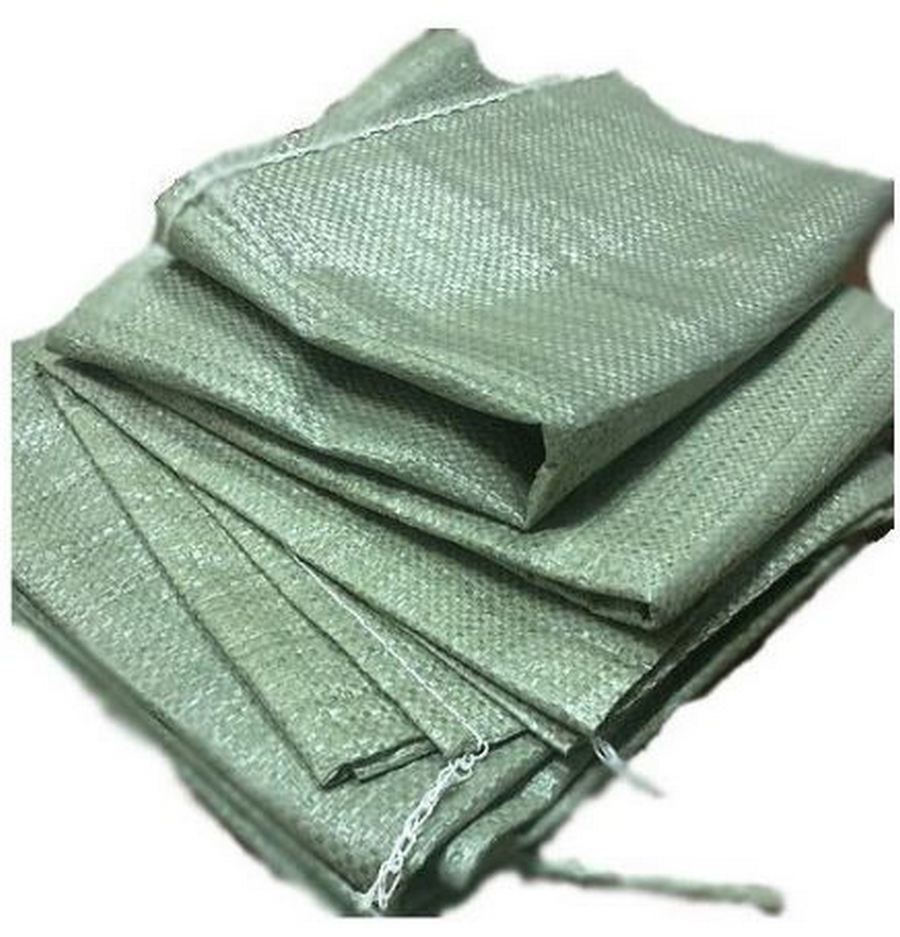
| Name | Index |
|---|---|
| Producing country | Russia |
| Variety | 3 |
| Dimensions, see | 55 x 95 |
| Additionally | Wholesale only |
| Price, rub./pc. | 5 |
- Increased strength.
- Average sizes;
- Budget price.
- Not identified (for its segment).
2nd place: "HB-OPT" 55*95 white
votes 0
A good sample that guarantees the required level of reliability and quality. It can carry out long-term storage of products and materials. Poorly absorbs odors, protected from moisture penetration.
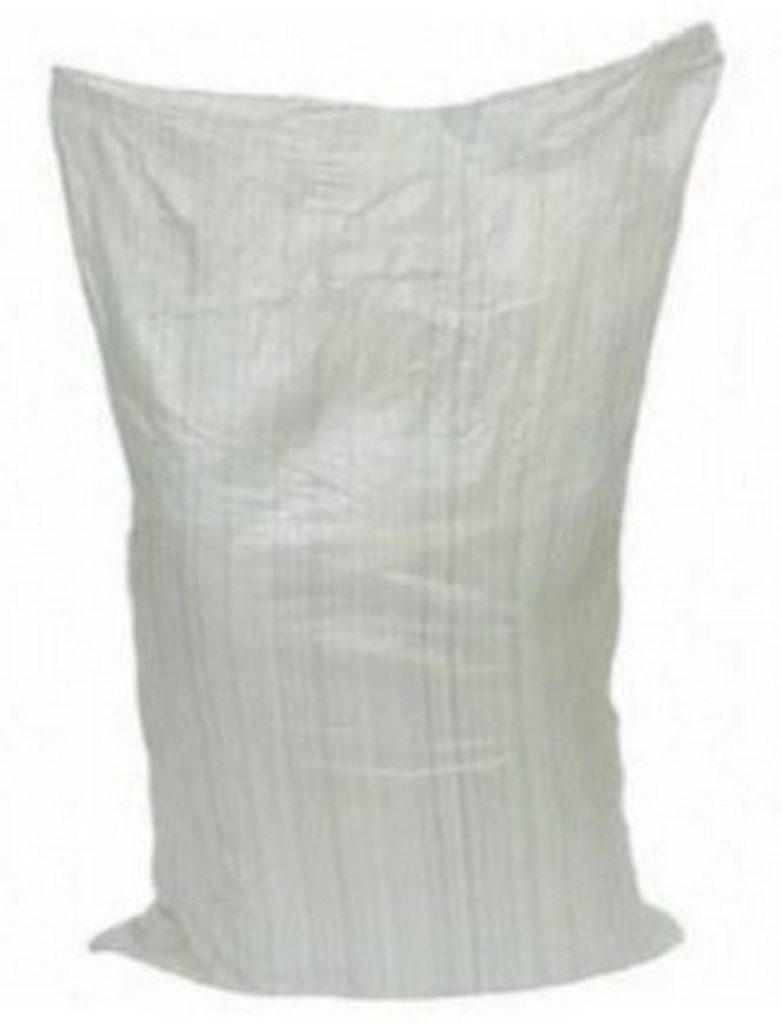
| Name | Index |
|---|---|
| Producing country | Russia |
| Variety | 1 |
| Dimensions, see | 55 x 95 |
| Additionally | Wholesale only |
| Price, rub./pc. | 8 |
- Strength;
- Withstands temperature difference;
- Roomy (up to 50 kg.)
- Difficult to find for sale.
1st place: "Matrix 93989"
votes 0
More focused on housework or cleaning areas. Made from recycled materials, however, subject to the rules of operation, it is quite capable of lasting for a long time. Not subject to decay and erosion.

| Name | Index |
|---|---|
| Producing country | Russia |
| Variety | 3 |
| Dimensions, see | 109 x 73 |
| Additionally | Volume - 120 l. |
| Price, rub./pc. | 14 |
- narrow focus;
- Budget price;
- Light weight.
- Little functionality.
Middle segment
3rd place: "Technopolis" 120*200
votes 0
A very comfortable option with wavy stitching and an inner liner. Some samples may have an outer laminate layer. Suitable for transportation and storage of any materials - food products, chemicals, waste. Not subject to rapid decay. The material is porous, does not slip in the hands.
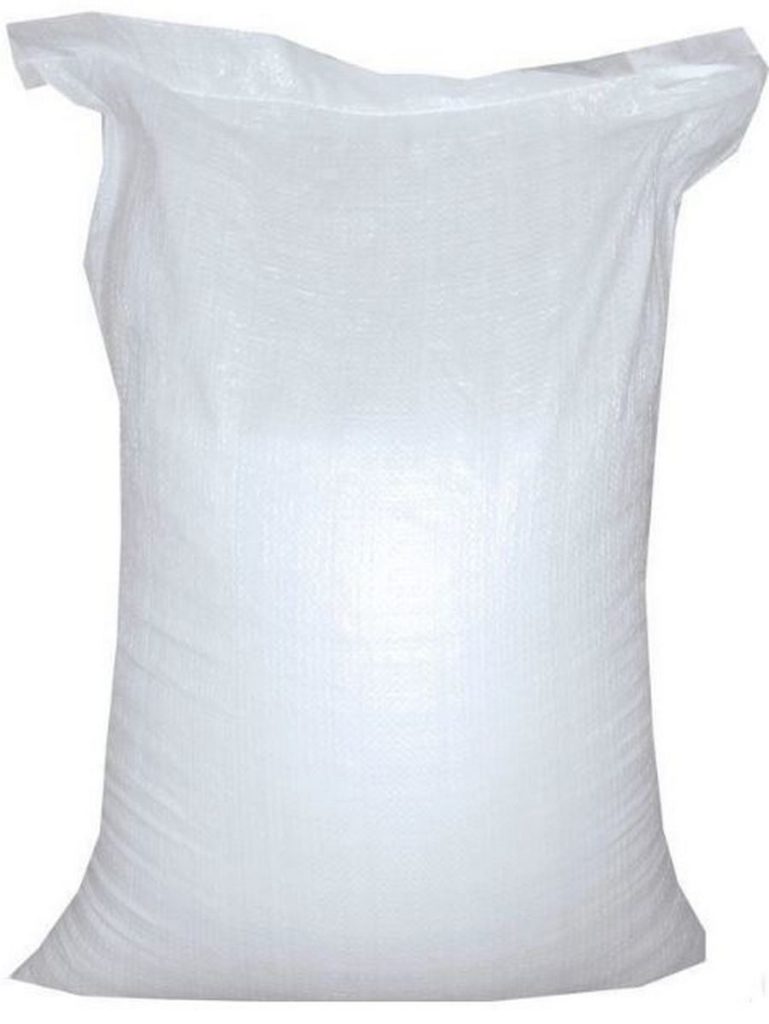
| Name | Index |
|---|---|
| Producing country | Russia |
| Variety | 1 |
| Dimensions, see | 120 x 200 |
| Additionally | Volume - 120 l. |
| Price, rub./pc. | 58 |
- Durability;
- The neck is stitched using a wavy technique;
- Resistant to mechanical shocks.
- Not found.
2nd place: "Fort" 55*95 green
votes 0
Durable model, oriented excluded to work with construction debris. It is based on a reinforced fibrous version of propylene, which allows you to transfer waste with sharp corners without breaking the integrity - broken glass, brick fragments, etc.

| Name | Index |
|---|---|
| Producing country | Russia |
| Variety | 2 |
| Dimensions, see | 55*95 |
| Additionally | Minimum lot - 10 pieces |
| Price, rub./pc. | 17.5 |
- Strong base;
- Has a throat tie;
- Excellent value for money and quality.
- Wholesale only.
1st place: "Staler-310"
votes 0
Very roomy variation, perfect for wholesalers. It is intended for storage/transportation of any substances. It is more focused on transportation using loading mechanisms, as evidenced by its increased capacity (100 liters).
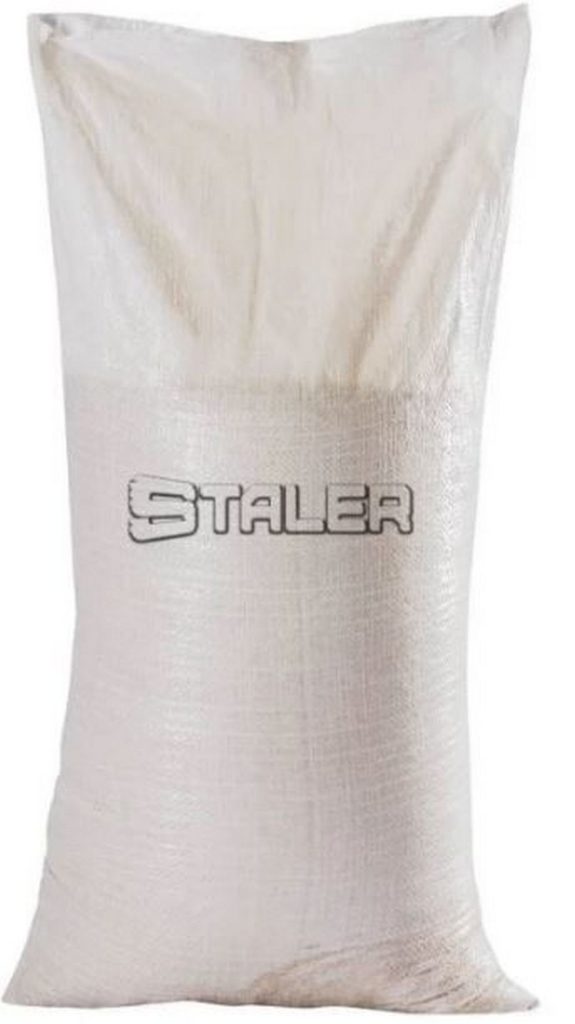
| Name | Index |
|---|---|
| Producing country | Russia |
| Variety | 2 |
| Dimensions, see | 105*55 |
| Additionally | Minimum lot - 10 pieces |
| Price, rub./pc. | 18 |
- Convenient execution;
- Capacity;
- Reliability.
- Mechanical transport only.
Expensive samples
2nd place: Avicomp 3404
votes 0
100 liter compact and robust coolies oriented towards universal use. They have a straight neck stitching, are equipped with an inner liner and a surface laminate. Very useful and presentable for the supply of any branded products.
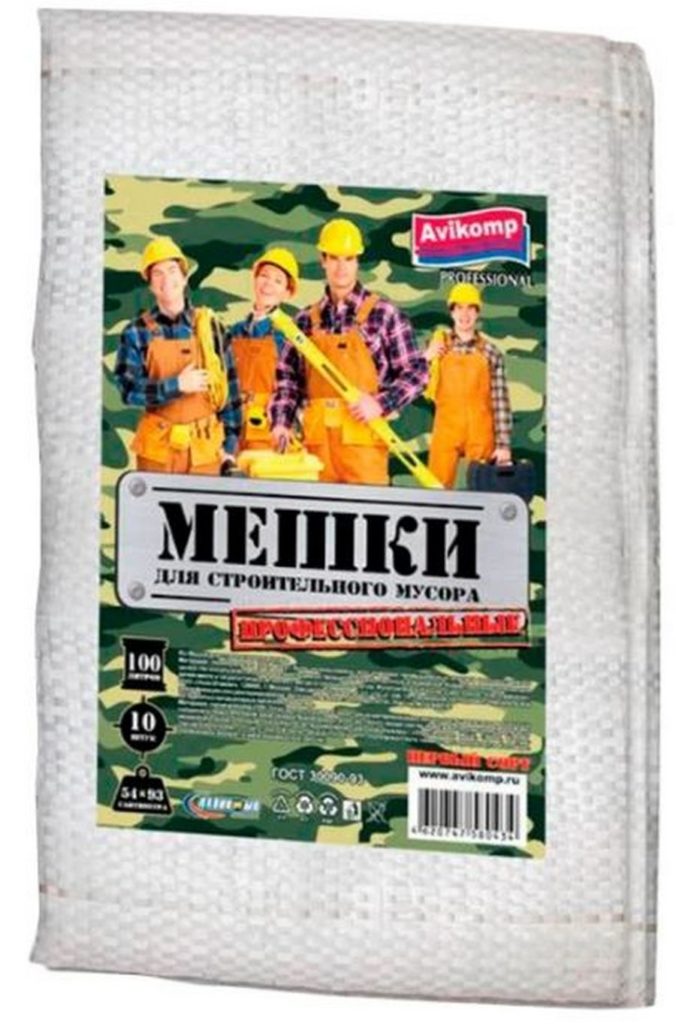
| Name | Index |
|---|---|
| Producing country | Russia |
| Variety | 1 |
| Dimensions, see | 105*55 |
| Additionally | Minimum lot - 10 pieces |
| Price, rub./pc. | 24.5 |
- Excellent strength indicators;
- Ability to quickly place stickers / logo;
- Adequate price.
- Not detected:
1st place: "Giant 12-04"
votes 0
A heavy-duty model capable of taking the correct geometric shape after filling, which indicates increased safety and stability of the load during long-term movement. The neckline is secured with a drawstring. However, this sample is not intended for food storage.
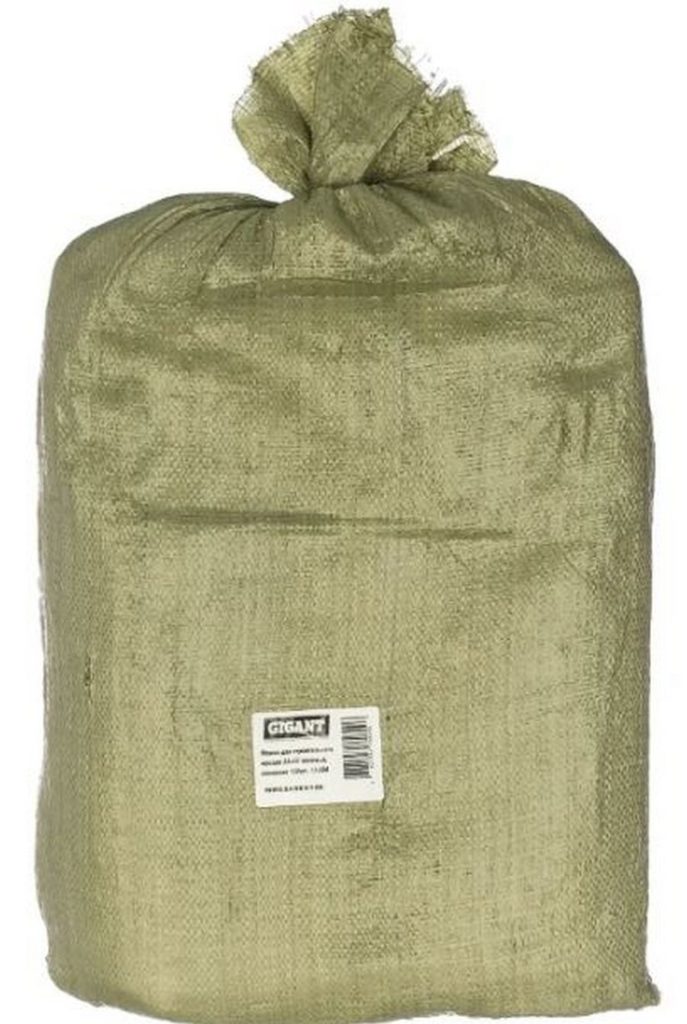
| Name | Index |
|---|---|
| Producing country | Russia |
| Variety | 2 |
| Dimensions, see | 95*55 |
| Additionally | Minimum lot - 10 pieces |
| Price, rub./pc. | 97.6 |
- Geometrically correct option;
- sustainability;
- The presence of a fixing lace at the neck.
- Narrow specification.
Instead of an epilogue
The analysis of the Russian market found that for the majority of domestic consumers it does not matter at all what material to use for storing garbage and waste. The situation is different with bags intended for storing food products.As a rule, large companies prefer universal options that combine dual technologies (liner + lamination). It is very convenient to apply advertising logos on such containers. Accordingly, such coolies are immediately purchased in large wholesale quantities.
new entries
Categories
Useful
Popular Articles
-

Top ranking of the best and cheapest scooters up to 50cc in 2025
Views: 131649 -

Rating of the best soundproofing materials for an apartment in 2025
Views: 127688 -

Rating of cheap analogues of expensive medicines for flu and colds for 2025
Views: 124516 -

The best men's sneakers in 2025
Views: 124030 -

The Best Complex Vitamins in 2025
Views: 121937 -

Top ranking of the best smartwatches 2025 - price-quality ratio
Views: 114978 -

The best paint for gray hair - top rating 2025
Views: 113393 -

Ranking of the best wood paints for interior work in 2025
Views: 110317 -

Rating of the best spinning reels in 2025
Views: 105326 -

Ranking of the best sex dolls for men for 2025
Views: 104363 -

Ranking of the best action cameras from China in 2025
Views: 102214 -

The most effective calcium preparations for adults and children in 2025
Views: 102010




